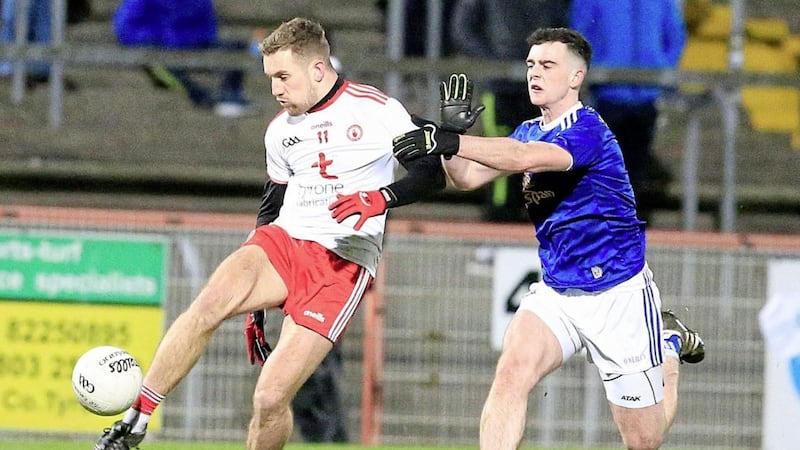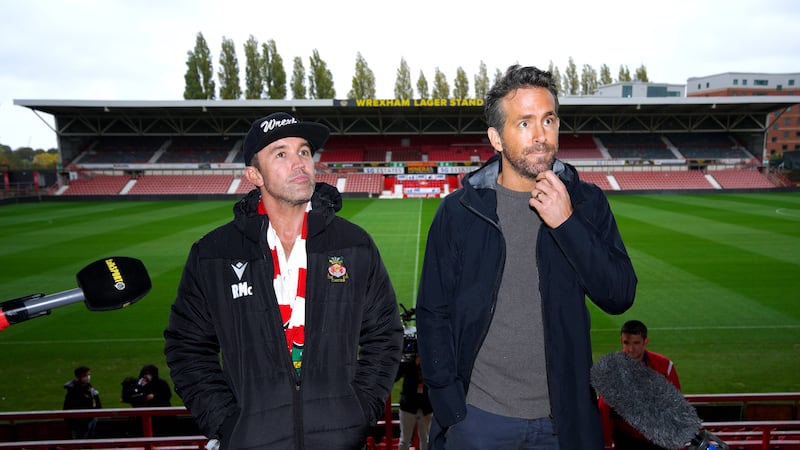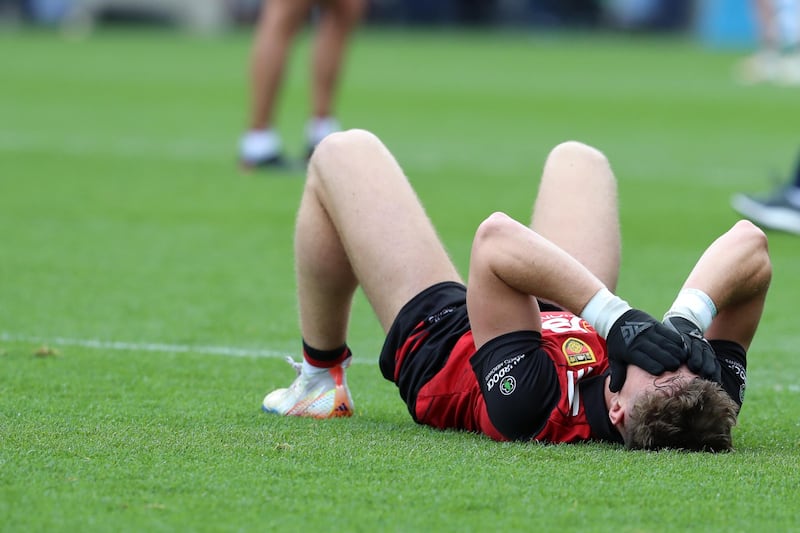As the dust starts to settle on another quality Allianz Football League campaign, county management teams will be commencing a stock-take or spring clean of sorts.
Looking across the Ulster counties, it is very much a case of mixed messages.
The managers will know only too well that the next six weeks or so, leading up to the opening Ulster Championship games, will be much more critical in defining their year than any early-season form and, for that matter, this weekend’s League finals.
We will start with the big rebuilding work going on in Derry, Antrim and Down.
All three counties don’t have to look back that far to remember happier times.
Derry were Division One finalists in 2014, while Antrim played in Division Two as recently as 2012 and reached an Ulster final 10 years ago.
Down, meanwhile, were in the top flight of the League in 2014, played in an All-Ireland final in 2010, and reached an Ulster final just two years ago.
Yet all three plied their trade in the lower reaches of the League this season.
The management teams in Antrim and Derry are both into their second years, so signs of progress would have been expected.
An immediate return to Division Three was demanded in Derry and has duly been delivered, albeit not in an overly inspirational manner.
Down would have been hoping for a quick promotion from Division Three but, ironically, they ‘did an Armagh’, shooting themselves in the foot with their last result, ensuring they will stay put for at least another year.
The problem for Derry and Down is that both counties, and by extension their players, are not accustomed to playing in the bottom couple of tiers.
Consequently, there is the potential for a negative cycle that, like a whirlpool, can suck a team down, or at the very least stop them climbing up the levels.
Opponents and games in the lower reaches lack the glamour and competitive edge that playing at a higher level brings.
This means that good, steady progress is not given enough credit and thus little momentum develops.
Yet momentum and positivity, within the team and the county as a whole, is critical if these relatively new teams and management set-ups are to progress.
In Antrim, the positives are even harder to find. Just like last year, they finished third in Division Four but, in truth, they had a poor campaign.
The win over Limerick in their final game will be framed as a momentum-starter, but Antrim are in a transitional period and don’t appear to have a new batch of top talent arriving any time soon.
Derry and Down can take some positives from the League – Derry showed a good level of consistency, while Down demonstrated an ability to gain hard-fought wins.
Few outside the county boundaries will take much notice, but the Oak Leafs and the Mournemen must take heart from the progress made while ignoring the detractors.
Both teams will hope that the stark contrast between their League games and the comparative glamour of their Championship openers against neighbours will bring about a significant upturn in performance levels.
For now, they will let the grass grow and hope to produce something special come May.
Cavan, Fermanagh and Armagh make up the current middle tier in Ulster.
Mickey Graham’s continued involvement with Mullinalaghta possibly didn’t help Cavan’s Division One survival hopes, but the fact is that, at present, a solid Division Two side is precisely what they are.
Despite being amongst those tipped for promotion at the start of the campaign, Armagh never got into the reckoning, in contrast to Fermanagh, who briefly flirted with the prospect of playing Division One football in 2020.
In the end, both stayed at the level they belong at for now – solid Division Two teams like Cavan.
All three teams have areas of real quality within their ranks, yet thay all struggle for consistency and continue to search for the right balance between their attacking and defensive games.
Armagh, for example, are still exhibiting a Jekyll and Hyde personality, with fantastic football and an exciting panel merging with ill-discipline and momentary lapses of concentration.
Injuries and a few dodgy calls have done them no favours but, while Kieran McGeeney can’t and won’t admit it, this year was about consolidating their Division Two status before dealing with the Championship monkey on their backs.
All eyes will now be on Newry and their clash with Down, and if I were that particular monkey, I’d be worried.
The top dogs in Ulster also garner mixed report cards from their early-season exertions.
If continuous improvement is the order of the day, Tyrone finish this part of the season at the top of the class.
Few would have predicted that after their first three games, but the ongoing development work of the past few years appears to have really started coming together.
The confidence beginning to flow through the team has been mirrored by a positivity in the stands that, even accounting for an All-Ireland final appearance last year, hasn’t been present for quite a while.
The focus now for Tyrone will be on fine-tuning their new gameplans and, crucially, on the ability to drift seamlessly between them.
Monaghan are the longest-serving Division One side in Ulster, yet they have just produced what was definitely their poorest campaign for quite some time.
The initial burst of enthusiasm that saw them beat Dublin has long since been dampened by subsequent performances, and also the fact that Dublin turned out to be no great shakes in this particular League campaign.
Monaghan’s 2018 exertions, where they broke their All-Ireland quarter-final hoodoo only to suffer a disappointing defeat to Tyrone in the last four, has to be used as a starting point when evaluating their League form.
I suspect that their subdued performances thus far in 2019 are reflective of a controlled start to the year in terms of training and preparation.
The energy levels that represent Monaghan at their best needed time to be replenished and with Division One status secured, the Farney county will look to recover their energy and bite during the inter-county break.
Some observers will once again question just how many times this group can go to the well but, while to an extent that is a worry, there has been a notable influx of new personnel and, given Malachy O’Rourke’s record, few will bet against them re-emerging as a real force come the summer.
Finally, Donegal were hamstrung by the unavailability of senior players for much of the League, but their younger men will benefit greatly from being left to steer the ship in the absence of Michael Murphy, Paddy McBrearty and Odhran Mac Niallais and a host of others.
The bottom line is that, with the added influence of Stephen Rochford on Declan Bonner’s developing, young and talented squad, coupled with the return of more seasoned players who have had plenty of time off during the League, Donegal will quietly fancy their chances of launching a serious bid for honours this summer, and not necessarily just at provincial level.
Of course, early-season football, particularly with April being handed over to clubs, can have little relevance come the summer.
All the teams will have their own targets, but in an Ulster Championship of opening derby games, there shouldn’t be any great difficulty in getting focused on the job at hand.
Never mind the League when there’s a chance to beat the neighbours.







